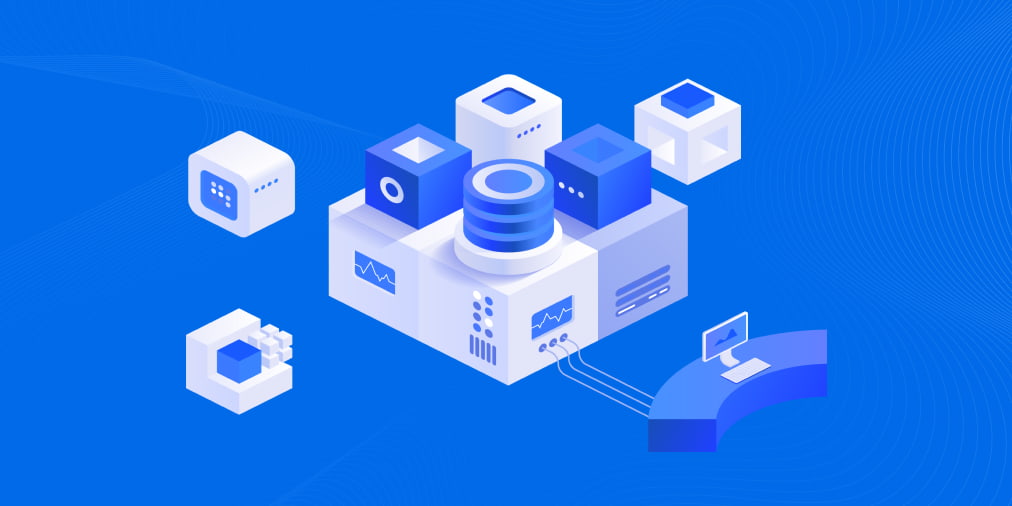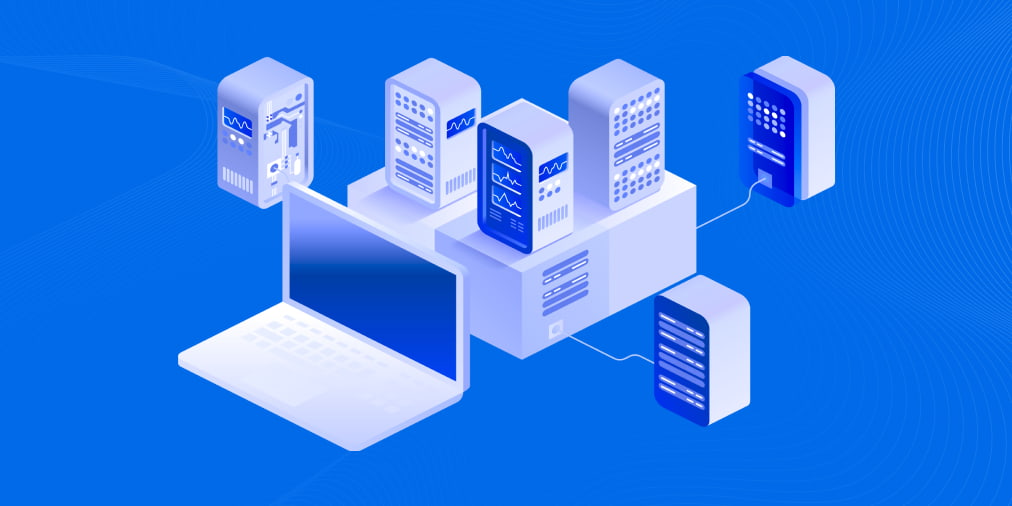An Overview of Disaster Recovery Sites
When disaster strikes – more often than not, unexpectedly – the consequences for your business can be unpredictable. They may include a loss of revenue, damaged business reputation, destruction of the production center, interrupted service delivery, and a loss of credibility with your customers.
To avoid the risk of putting the business in danger, it is essential to prepare yourself in advance by designing an effective disaster recovery (DR) plan. One of the main components of a DR plan is the secondary site (also known as DR site), which will be used for data storage and rapid recovery in case disaster strikes. This blog post discusses the role of DR sites in the recovery process and how they can improve business continuity.
What Is a Disaster Recovery Site?
A disaster recovery site is a location used by an organization for restoring its IT infrastructure and business-critical operations when a primary production center is affected by a natural or man-made disaster. Disaster Recovery sites are often built in a remote location so as to ensure that the disaster which has affected the main site will not affect the secondary site as well. Creating a DR site allows an organization to continue conducting operations and delivering services without disruption, until the primary location is restored.
Types of Disaster Recovery Sites
There are three types of backup sites: cold sites, warm sites, and hot sites. Let’s look at what each of the sites represents and what differentiates them from one another.
Cold site
A cold site is a backup facility with little or no hardware equipment installed. A cold site is essentially an office space with basic utilities such as power, cooling system, air conditioning, and communication equipment, etc. A cold site is the most cost-effective option among the three disaster recovery sites. However, due to the fact that a cold site doesn’t have any pre-installed equipment, it takes a lot of time to properly set it up so as to fully resume business operations. In case of a disaster, an organization would require help from IT personnel to migrate necessary servers and make them functional in order to take on the workload of the primary site.
Hot site
A hot site is a backup facility which represents a mirrored copy of the primary production center. A hot site is equipped with all the necessary hardware, software, and network connectivity, which allows you to perform near real-time backup or replication of the critical data. This way the production workload can be failed over to a DR site in a few minutes or hours, thus ensuring minimal downtime and zero data loss. A hot site is expected to be always online and running without disruption so as to ensure data synchronization between the sites.
A hot site is the most expensive option among the three. Thus, it is important to ensure that this type of a DR site is located far enough from the production center. This way you can decrease the possibility of a hot site being affected by the same disaster as the primary site.
Warm site
A warm site is considered the middle ground between the cold site and the hot site. A warm site is a backup facility that has the network connectivity and the necessary hardware equipment already pre-installed. However, a warm site cannot perform on the same level as the production center because they are not equipped in the same way. Therefore, a warm site has less operational capacity than the primary site. Moreover, data synchronization between the primary and the secondary sites is performed daily or weekly, which can result in minor data loss. A warm site is perfect for organizations which operate with less critical data and can tolerate a short period of downtime. This type of a DR site is the second most expensive option.
Below you can see the main features of disaster recovery sites and how they compare.

Factors to Consider When Choosing a DR Site
When creating a DR plan, the team responsible for the recovery process should decide which DR site type is most suitable for their organization. Making this decision can be quite challenging. As you can see, all of the DR sites types have unique advantages and disadvantages which differentiate them from one another. Time, budget, business priorities, and location are the most influential factors which will be discussed below.
Time
The recovery team should first consider the period of downtime that your organization can tolerate before operations can be resumed (Recovery Time Objective – RTO) and how much data (measured in time) can be lost without incurring significant losses (Recovery Point Objective – RPO). This factor identifies how advanced your DR site needs to be in order to deliver the recovery services on time. For this purpose, conduct a business impact analysis and identify the RTO and RPO values suitable for your organization.
Budget
When building a DR site, the issue of cost will surely be raised. In this case, the recovery team needs to calculate the amount of money that the company is willing to spend on a DR site. How expensive the process of building a secondary site will be is generally defined by the required equipment, the number of IT personnel, and possible maintenance costs.
Note that the decision to go with a less costly option, such as a cold site, may eventually backfire during a DR event. Thus, an organization can incur significant financial losses as the result of prolonged inactivity. Moreover, the cost of purchasing and installing the required equipment in a short period of time can be extremely high.
Business priorities
The next factor worth considering is business priorities. In this case, the recovery team is expected to identify the functions and processes which are the most critical for an organization and what would be the effect of their disruption. Also, an organization should define the recovery order of the system components based on how critical they are. The decision is made with regard to a business impact analysis which identifies the consequences of losing crucial data and services during a DR event.
Location
The choice of location is primarily dictated by how sensitive and critical the data is, how big the allocated budget is, and what types of disaster the area is most subjected to. If you want to ensure near real-time data synchronization between the primary and the secondary sites, both sites should be located relatively close to each other. However, in this case, a disaster might affect both locations at the same time, leaving you with no chance for system recovery.
On the other hand, if the sites are situated too far away from each other, issues with data synchronization might occur. Moreover, it would then be necessary to hire new IT personnel responsible for maintaining a remote DR site, which would eventually result in additional costs.
All the factors mentioned above can help you make the right choice among the DR sites. To do so, evaluate the pros and cons of each DR site and consider how they comply with the needs and priorities of your organization.
Site Recovery with NAKIVO Backup & Replication
Managing the DR process can be a very challenging and resource-intensive task. To avoid unnecessary overhead and ensure continuous availability of business operations, NAKIVO Backup & Replication has developed built-in Site Recovery functionality, which will be discussed below.
Site Recovery overview
Site Recovery was specifically designed with the aim of considerably simplifying the DR process. Essentially, Site Recovery functionality allows you to create Site Recovery (SR) workflows which enable automation and orchestration of the entire DR process. SR jobs can be tailored in a specific way to serve a DR scenario of your choice. SR jobs can vary in scale and complexity and, due to this discrepancy, they can be used for serving multiple different purposes. Thus, Site Recovery provides you with the opportunity for testing SR workflows without disrupting primary workflow, running planned and emergency failover and failback, and performing successful data center migration.
With the Site Recovery feature, you can build a SR workflow by arranging actions and conditions in a specific order. The actions and conditions available for a SR job include the following: Run or Stop VMs/instances; Failover or Failback VMs/instances; Run or Stop jobs; Run script; Wait; Attach or Detach Repository; Check condition, etc. The number of SR workflows that you can create with these actions is unlimited.
SR workflows can be run in two modes: production (used during an actual disaster) or test (used to check the state of a SR job and its results). Should there arise some changes in the company’s infrastructure, NAKIVO Backup & Replication allows you to modify and update SR jobs to reflect those changes.
Site Recovery benefits
As you can see, Site Recovery is a comprehensive and versatile feature which allows you to easily orchestrate and automate the DR process. However, this is just one of the many benefits that it provides. Below, you can see the list of other advantages sported by the Site Recovery feature.
Non-disruptive testing. Testing a SR job is important as it allows you to check its validity and verify that the expected results can actually be met. This way you can be sure that everything goes as planned during an actual disaster. With NAKIVO Backup & Replication, you can run SR job testing, either on demand or on schedule without disrupting your production environment. Moreover, when running a SR job in test mode, you have the opportunity to establish the RTO and see if the target can be met. After job completion, you can analyze the SR workflow and its results and update the SR job accordingly.
Built-in feature. Site Recovery is an exclusive feature developed by NAKIVO Backup & Replication, which is built into the product’s toolset. This means that you aren’t required to buy a separate license for Site Recovery as it all comes with the package. Thus, NAKIVO Backup & Replication allows you to manage all of the recovery and data protection processes from a single pane of glass.
Cost-efficiency. NAKIVO Backup & Replication is an affordable solution which allows you to save time, effort, and money. As mentioned above, Site Recovery is a built-in feature of NAKIVO Backup & Replication, meaning that, in addition to the Site Recovery feature, you also receive the rest of the product’s integrated feature set. Unlike most of its competitors, NAKIVO Backup & Replication provides affordable per-socket licensing; thus, the entire DR solution is available for a fraction of the price.
Ease of use. NAKIVO Backup & Replication has a simple and user-friendly web-based interface, which allows you to manage data protection and recovery processes from anywhere. Moreover, creating a SR job includes only five steps and it can be easily set up and run. In case disaster strikes, you are only a few clicks away from running a SR job and restoring your virtual infrastructure. Ergo, you no longer have to worry about manually configuring and monitoring the entire DR process and can be sure that your virtual environment can be safely recovered on time.
Conclusion
Any business can be negatively affected by unexpected events. To avoid losing revenue, clients, and even production, be sure to design a comprehensive DR plan to protect your organization against any unpredicted disaster that might disrupt your production environment. Make sure that your data is securely stored and can be easily recovered during a DR event by building a DR site (cold, hot, or warm) that complies with the needs and priorities of your business.
NAKIVO Backup & Replication can help you with managing the DR process from start to finish. Its Site Recovery feature allows you to build an automated algorithm consisting of a number of actions and conditions arranged in a specific order which can be adjusted to meet your business needs and serve various DR scenarios. As you can see, the Site Recovery feature is an efficient tool that can significantly reduce downtime and achieve 24/7 availability of business operations.




